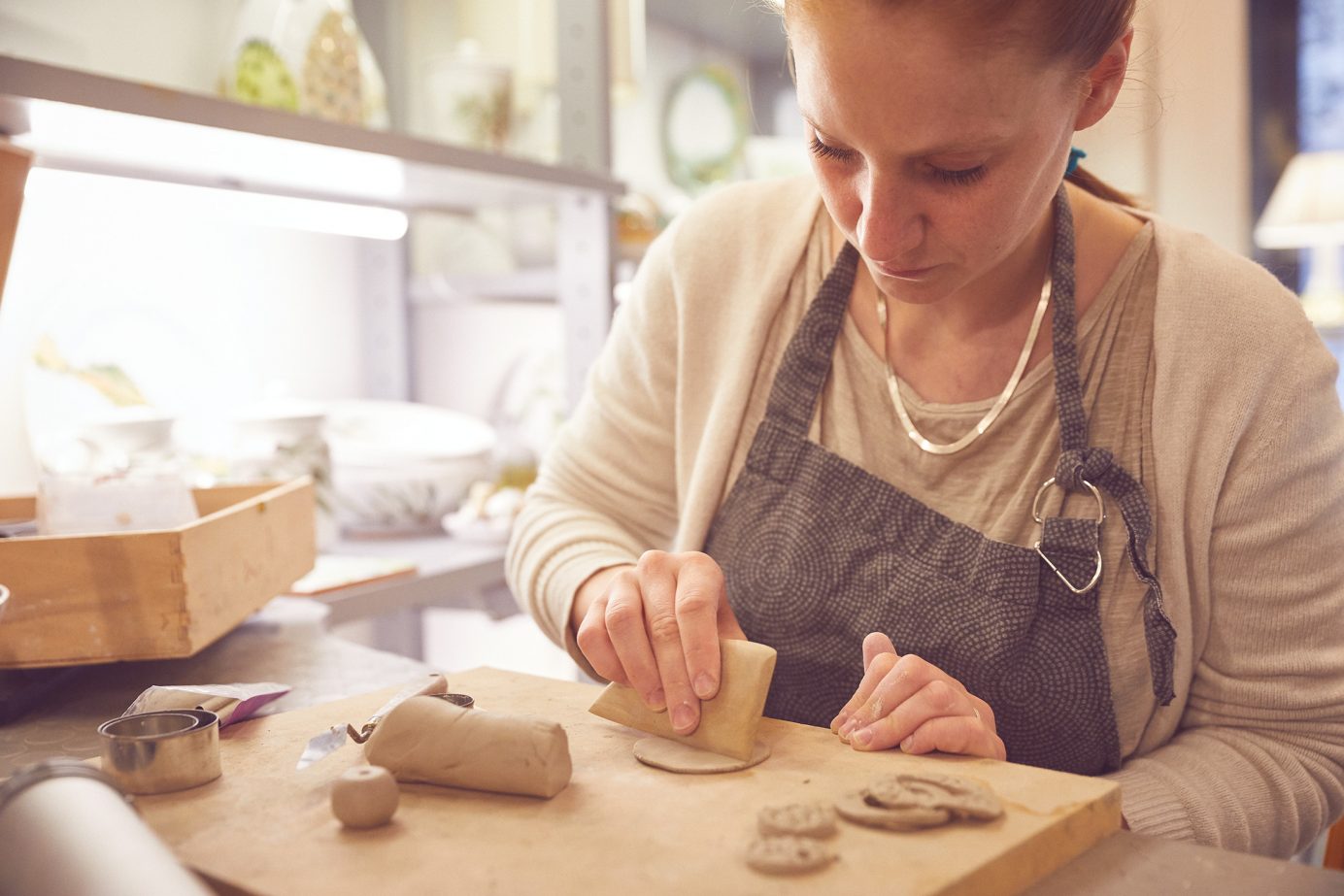Ceramic Modeling Techniques
Modeling is a fundamental step in the process of working with ceramics. Modeling techniques are many and varied.
The first step in the ceramic working process is the selection of the raw material. At Materia Ceramica art ceramics workshop, each majolica ceramic piece is born from the same raw material: clay. In particular, red clay which is very malleable and suitable for this type of process. Let’s take a look at the most commonly used modeling techniques.
Freehand Modeling
Freehand modeling is the oldest technique: take a portion of clay and, with just the use of your hands, shape it into the desired form. It is possible to make use of some tools, such as splints or eyelets for the finishing touches of the molded piece. Our ceramic jewelry and accessories created with this technique are completely handmade.
Colombino (Coil) Modeling
The colombino modeling technique is also very ancient, but still in use. The term colombino denotes a clay working technique used by the peoples of South America (also called lucignolo).

Since ancient times, the colombino technique has been used to make clay vases, cups, and containers.
With the advent of the potter’s wheel, this technique was superseded but never abandoned.
Colombino modeling involves the use and assembly of ropes (cordoncini) of clay. In order to make them, cigar-sized blocks of clay are rolled out with the palms of the hands, resulting in long cylinders similar to breadsticks. The resulting colombini are then rolled on top of each other, joined together and smoothed out to obtain a compact surface. Today, this ancient process is mainly used for making large bowls and vases.
Slab Technique
Slab shaping or molding is an easy technique to learn. In fact, we demonstrate it very frequently in our ceramics classes.
First, you take a block of clay and slice it into slabs of uniform thickness with the help of a wire (harp), or by rolling them out with a rolling pin. The slabs are then cut into molds or joined together with the help of incisions smeared with liquid clay (barbotine).
Different supports are used in order to hold the clay in shape, such as large bowls, bottles, spheres or pipes. It is possible to create different shapes from a slab of clay: semi-slumped slabs can be molded into three-dimensional shapes with flat surfaces; meanwhile, plastic slabs, which are stretched with a rolling pin, can be molded into different shapes using pressing molds as supports.
Ceramic Modeling: Lathe Molding
We proceed with lathe molding to obtain a perfect cylindrical object, thus creating the desired shape by hand. Once before, the potter would place the clay in the center of the lathe’s turntable and shape it with his hands while using his leg to move the lathe so that the wheel would turn. Nowadays, the lathe is electric and the skill of the potter lies in the skillful use of his hands shaping the clay on the rotating plate. The ball of clay is first placed at the center and then slowly shaped with the hands from the center by lifting its sides until the desired shape is obtained. Deruta has master turners who are among the best in Italy.
Ceramic Modeling: Lathe Molding
Slip Casting is a ceramic modeling technique used to create the most complex shapes A plaster mold is made from a prototype.
Nowadays, digital shaping allows the creation of perfect geometrical prototypes thanks to numerical control.
Liquid clay is poured into the plaster mold. The plaster wall absorbs the water from the clay until a proper thickness is obtained within a few hours; the solid clay is then removed from the mold. This way, the created piece acquires the hardness of leather. It is polished in order to remove imperfections and left to air dry, then fired in a kiln.
One mold can be used to create to 50 pieces.






